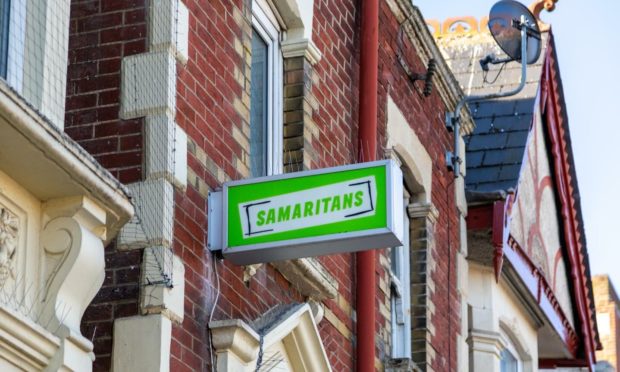More deaths linked to suicide were reported in Tayside and Fife in 2020 compared to the previous year.
Cases rose by 55% in Angus, 46% in Fife, 8% in Perth and Kinross and 3% in Dundee between 2019 and 2020.
Across Scotland, however, a total of 805 deaths linked to suicide were reported – the first time the rate has fallen year-on-year since 2019.
The latest information is revealed by the National Records of Scotland in its yearly update on the number of deaths from specific causes.
More deaths among men
The figures show that over the past five years, Dundee had more suicide-related deaths than any other part of Scotland, per head of population.
For 2020 alone, Clackmannanshire had the highest rate of suicide per 100,000 people followed by Dundee.
Of the 805 deaths linked to suicide in 2020, 575 were among men and 230 were among women.
They are the first reported figures since the Covid-19 pandemic saw government restrictions on daily life introduced in spring 2020.
Charities stress suicide rates in a single year may deviate from an overall trend, saying it was best to look at timeframes of three or more years to identify significant trends.
Dundee’s suicide rate remains above Scottish average
Dundee City’s five-year rate of suicide per 100,000 people stands at 23.9 compared to an average across Scotland of 14.1.
Glasgow City, Highland and Falkirk were the only other local authority areas to have a five-yearly suicide rate in Scotland above the national average.
While the number of new suicide deaths in Scotland fell from the 2019 figures, Fife, Angus and Perth and Kinross all saw the rate of suicides per 100,000 increase from 2019 to 2020.
Most deprived areas of Scotland record highest suicide rates
Fife saw its yearly rate increase from 12.05 in 2019 to 17.64 in 2020, a similar rise from 9.47 to 14.68 was also reported in Angus.
The most deprived areas of Scotland had a rate of suicide of 22.5 deaths per 100,000 compared to 7.5 per 100,000 in the least deprived areas.
Rachel Cackett, executive director of Samaritans Scotland, stressed it was important to remember there was no single reason why someone might take their own life.
“Every one of these 805 deaths represents a life lost, with devastating consequences for families, friends and communities.
“We know that the coronavirus pandemic has disrupted all our lives, creating new challenges for mental health and exacerbating existing risk factors for suicide.”
She added that the latest data showing a fall in deaths linked to suicide was a “small but positive step”.
Dad says son’s death ‘could have been prevented’
Scotland’s National Suicide Leadership Prevention Group also responded to the figures, saying they were a reminder that more work was needed.
NSPLG chair Rose Fitzpatrick said: “Whilst there has been a small decrease in deaths by probable suicide in 2020, which of course we welcome, we will never forget that every life matters.
“Suicide is preventable, and so the release of this data is a reminder that our work must continue to focus on giving everyone a role to play in saving lives.”
Steve McHugh, whose son died by suicide in 2016, is part of NSPLG’s lived experience panel.
Impact of Covid related isolation
He said that whilst it was encouraging to see the number falls it was important to remember they started for a relatively high position.
Speaking about the impact of coronavirus, he said: “As a volunteer on helplines I know that Covid related isolation and loneliness has been a factor in people’s mental health.
“The NSPLG campaigns will continue and our goal is to drive suicide rates even lower. None of these 805 deaths was inevitable and we are focused on that.
“The biggest risk factor for suicide is still being a man and we need better inroads to help men to open up about their feelings and vulnerabilities which can so often be a pathway to suicide ideation and attempts.
“I think my son’s suicide could have been prevented if we had a culture of being able to talk about mental health and suicide more openly.”
Whatever you’re going through, you can call Samaritans free any time on 116 123 or email: jo@samaritans.org or visit www.samaritans.org to find details of your nearest branch.
